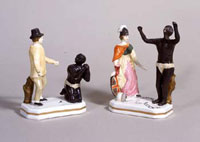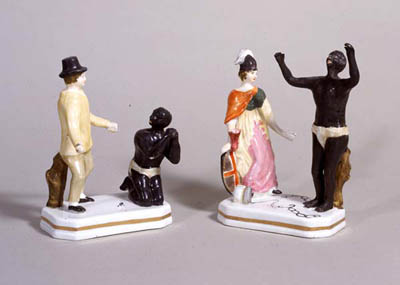
Oyeladun - Resistance
Oyeladun stays on the plantation from 1785 - 1834. Freedom comes to Barbados in 1834 but things do not change for Oyeladun. She is old, has no family and nowhere to go. She continues to work for the same family but her conditions improve and she comes and goes as she pleases.
A pair of porcelain statues

A pair of porcelain statues, celebrating the end of slavery. They show 'before' and 'after' abolition. Staffordshire, 1830-40. The statues suggest that black people's freedom came through white/British action. However there were rebellions by slaves that led to the freedom of many captives and helped prompt this change, eg a 1791 uprising led to the creation of the first independent black republic at San Domingo.
Freedom
Slavery was abolished in Barbados in 1834. For the next four years the now free Africans continued to work on the plantations without pay. In exchange they received free lodgings in the tiny plantation huts. In 1838 there was a huge party at which an estimated 70,000 people of African descent celebrated their freedom.


